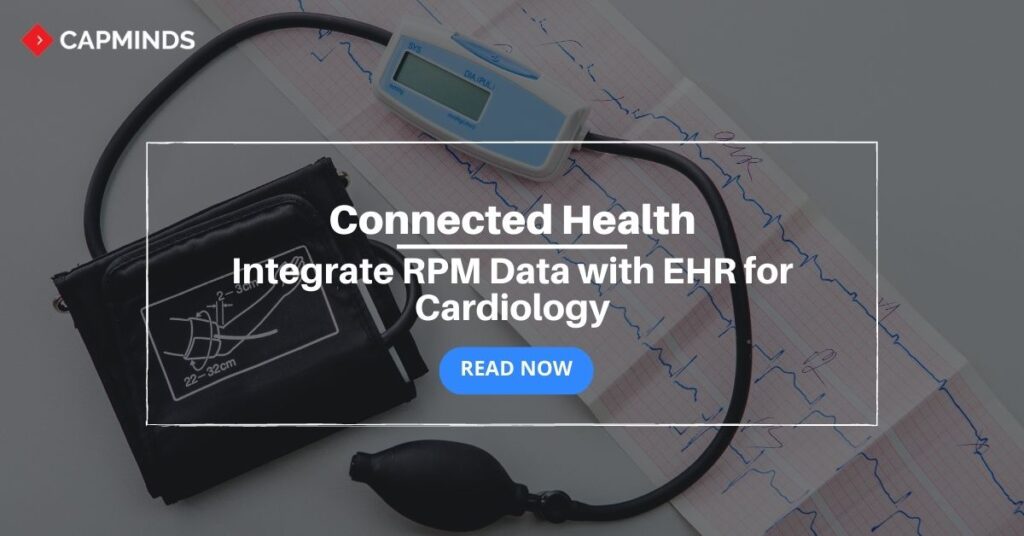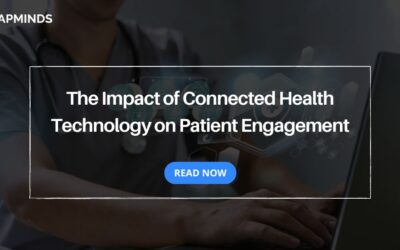How to Integrate Connected Health RPM Data with EHR for Cardiology
In the realm of cardiology, the integration of medical device remote patient monitoring (RPM) data with electronic health records (EHR) has opened up new possibilities for enhancing patient care and optimizing treatment outcomes.
Connected health technologies have revolutionized how healthcare providers monitor and manage cardiovascular conditions by enabling the seamless transmission and integration of real-time data from medical devices into EHR systems.
This integration has transformed the way cardiology practices operate, providing healthcare professionals with comprehensive insights, streamlined workflows, and personalized patient care.
RELATED: Top 6 Most Demanded Connected Health Devices in 2023
The integration of medical device RPM data with EHRs in cardiology involves several steps and technologies to ensure seamless data exchange and accessibility.
Steps & Technologies for Integrating Medical Device RPM Data with EHRs
RELATED: Remote Patient Monitoring 101: Everything for 2023 & Beyond
1: Device Selection
- Cardiology-specific RPM devices are chosen based on the specific needs of the cardiology practice
- These devices may include ECG monitors, Holter monitors, ambulatory blood pressure monitors, or implantable cardiac devices like pacemakers or defibrillators
2: Data Capture & Transmission
- The selected RPM devices capture relevant cardiac data like ECG readings, heart rate, blood pressure, or other cardiac parameters
- This data is securely transmitted from the devices to a central server or cloud-based platform using communication technologies like Bluetooth, Wi-Fi, or cellular networks
3: Data Validation & Transformation
- The received cardiac data undergoes validation and transformation processes to ensure its accuracy and compatibility with the EHR system
- This includes verifying the quality of ECG tracings, correcting any artifacts or noise, and converting the data into a standardized format suitable for integration with the EHR
4: Interface Development
- Interfaces are developed between the RPM system and the EHR system to facilitate data exchange
- Application Programming Interfaces (APIs) or interoperability standards like HL7 are utilized to establish a connection between the two systems
- These interfaces enable the bidirectional flow of data between the RPM devices and the EHR
5: Data Integration
- The validated and transformed cardiac data is integrated into the patient’s EHR
- The RPM system transfers the data to specific sections or modules within the EHR, ensuring proper recording and association with the patient’s medical record
- This integration enables providers to access cardiac data alongside other clinical information
6: Data Visualization & Analysis
- The integrated cardiac data is visualized within the EHR, providing providers with a clear representation of the patient’s cardiac health
- ECG tracings, heart rate trends, blood pressure readings, and other relevant visualizations help in diagnosing and monitoring cardiac conditions
- Advanced analysis tools may be used to identify patterns, anomalies, or indicators of cardiac events
7: Real-time Alerts & Notifications
- The integrated cardiac data can trigger real-time alerts and notifications within the EHR
- Predefined thresholds or abnormal readings can generate alerts, prompting providers to take immediate action or initiate further investigations
- These alerts ensure timely intervention and enhance patient safety
8: Longitudinal Monitoring and Trend Analysis
- The integration of RPM data with the EHR allows for longitudinal monitoring and trend analysis of the patient’s cardiac health
- Providers can review historical data, compare previous ECGs, and track changes over time
- This longitudinal view facilitates the identification of disease progression, treatment effectiveness, and the need for intervention or adjustments in the management plan
9: Cardiology-specific Decision Support
- Integrated RPM data within the EHR can support cardiology-specific decision-making
- Algorithms or rules-based systems can analyze the cardiac data in real-time, flagging potential abnormalities or deviations from expected norms
- These decision support tools assist providers in making informed decisions regarding diagnostics, treatment plans, and follow-up care
10: Clinical Research and Population Health Management
- Aggregated and de-identified cardiac data derived from integrated RPM and EHR systems can be leveraged for clinical research and population health management initiatives
- Researchers can analyze data sets to gain insights into cardiology trends, treatment outcomes, and the effectiveness of interventions
- Population health management strategies can be devised based on the aggregated data to improve cardiac care on a broader scale
Benefits, Challenges, & Impact of Integrating Medical Device RPM Data With EHR for Cardiology
1. The Power of Real-time Data Integration
- Integrating medical device RPM data with EHR systems empower providers with real-time access to vital patient information, including blood pressure, heart rate, oxygen saturation, and electrocardiogram (ECG) readings
- This instantaneous data integration allows cardiologists to closely monitor patients’ cardiac health, detect anomalies, and make informed decisions promptly
- By having a holistic view of the patient’s health status, healthcare professionals can better identify trends, track progress, and detect any potential complications early on
2. Enhanced Treatment Planning and Personalization
- The integration of RPM data with EHR enables more accurate and personalized treatment planning for patients with cardiovascular conditions
- With access to comprehensive patient data, including historical trends and device readings, cardiologists can tailor treatment plans to individual needs
- This personalized approach improves medication management, lifestyle recommendations, and interventions, resulting in optimized outcomes for patients
- Additionally, the integration allows for better coordination and communication among the care team, ensuring that everyone involved has access to up-to-date information for informed decision-making
3. Streamlined Workflows and Efficiency
- Integrating RPM data with EHR systems streamlines cardiology workflows and enhances the overall efficiency
- Manual data entry is minimized, reducing the potential for human error and saving valuable time for providers
- With automated data capture and integration, healthcare professionals can focus more on patient care, interpretation of data, and proactive interventions
- This streamlined workflow allows for a more efficient patient management process, enabling cardiologists to see more patients, provide timely interventions, and optimize their practice’s productivity
4. Remote Monitoring and Improved Patient Engagement
- The integration enables remote patient monitoring, revolutionizing how cardiology practices engage with patients
- RPM devices like wearable monitors and home-based blood pressure cuffs, transmit data directly to EHRs, allowing providers to remotely monitor patients’ cardiac health and intervene when necessary
- This remote monitoring approach improves patient engagement, as individuals feel empowered and involved in their own care
- They can actively participate in their treatment by adhering to self-monitoring protocols, tracking their progress, and sharing data with their healthcare team
- This increased engagement promotes a sense of ownership over their health and fosters a stronger patient-provider relationship
5. Data Security and Interoperability Challenges
- Integrating presents challenges related to data security and interoperability
- Patient health data must be protected through stringent security measures to ensure privacy and compliance with regulations like the Health Insurance Portability and Accountability Act (HIPAA)
- Cardiology practices must implement robust cybersecurity protocols and data encryption to safeguard patient information
- Additionally, ensuring interoperability between different RPM devices and EHR systems is crucial to enable seamless data exchange and integration
- Standardization of data formats, communication protocols, and interoperability standards is necessary to overcome these challenges and ensure smooth integration across different
Connected Health Services from CapMinds
Improve patient outcomes by providing timely, personalized care that is more accessible, convenient, and cost-effective than traditional healthcare with CapMinds Smart connected health services. Monitor patients remotely, detect potential health issues early on, and intervene before they become more serious. Our services help reduce healthcare costs by avoiding hospital readmissions, preventing complications, and improving medication adherence.
Our Connected Health features include and are not limited to;
- Remote Patient Monitoring
- Telehealth/telemedicine
- Personalized medicine
- Health Information Exchange
- Patient Engagement
- AI & ML
- Remote care coordination
- Digital therapeutics
- Wearable device integrations
CapMinds provide smart and advanced integration & implementation of connected health device services like Smart Meter, Google Fit, Dexcom, Ambrosia, Freestyle Libre, Tidepool, etc., to make you better track and monitor your vitals and be connected with healthcare providers.
“Let us help you be exceptionally connected for better patient outcomes”



